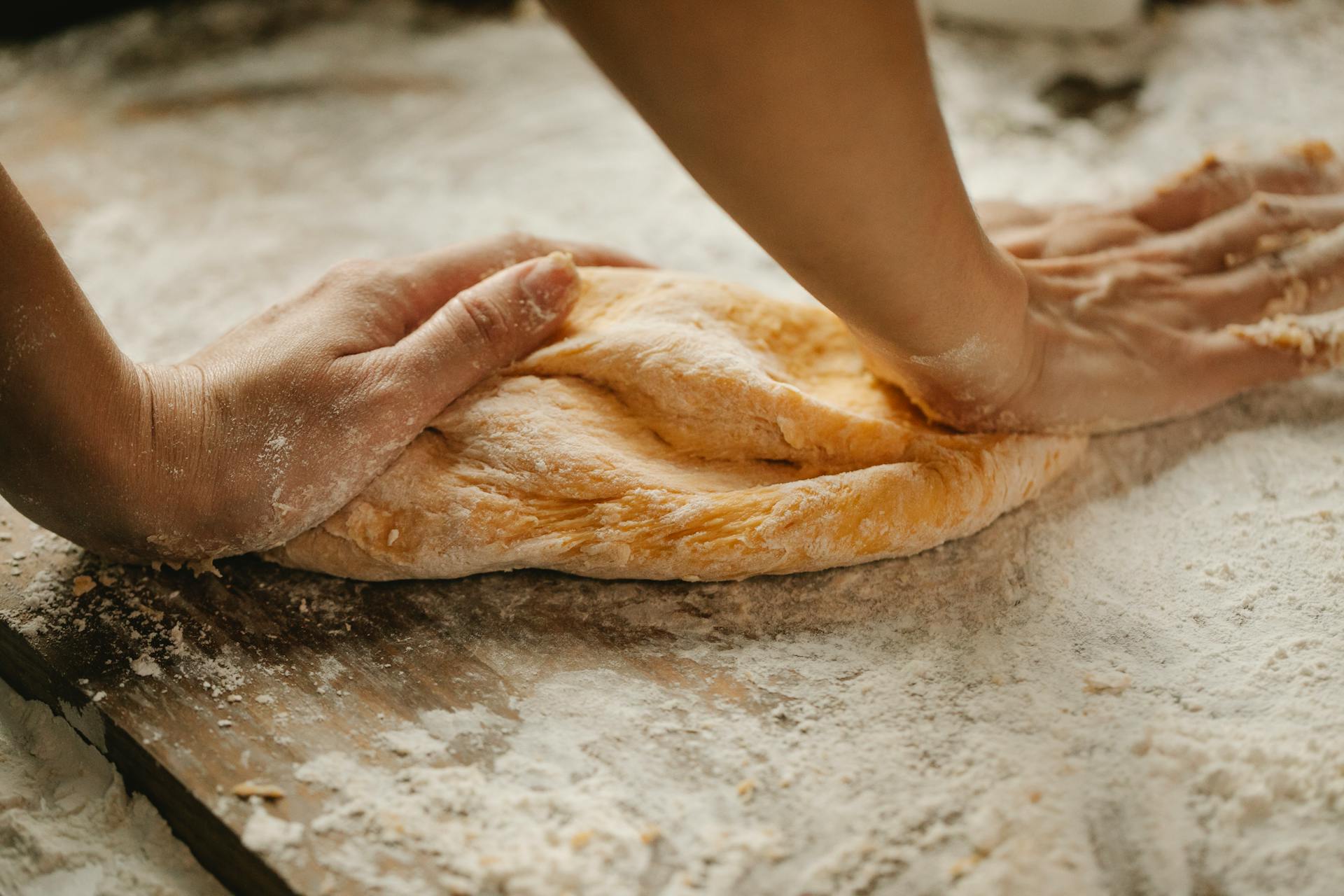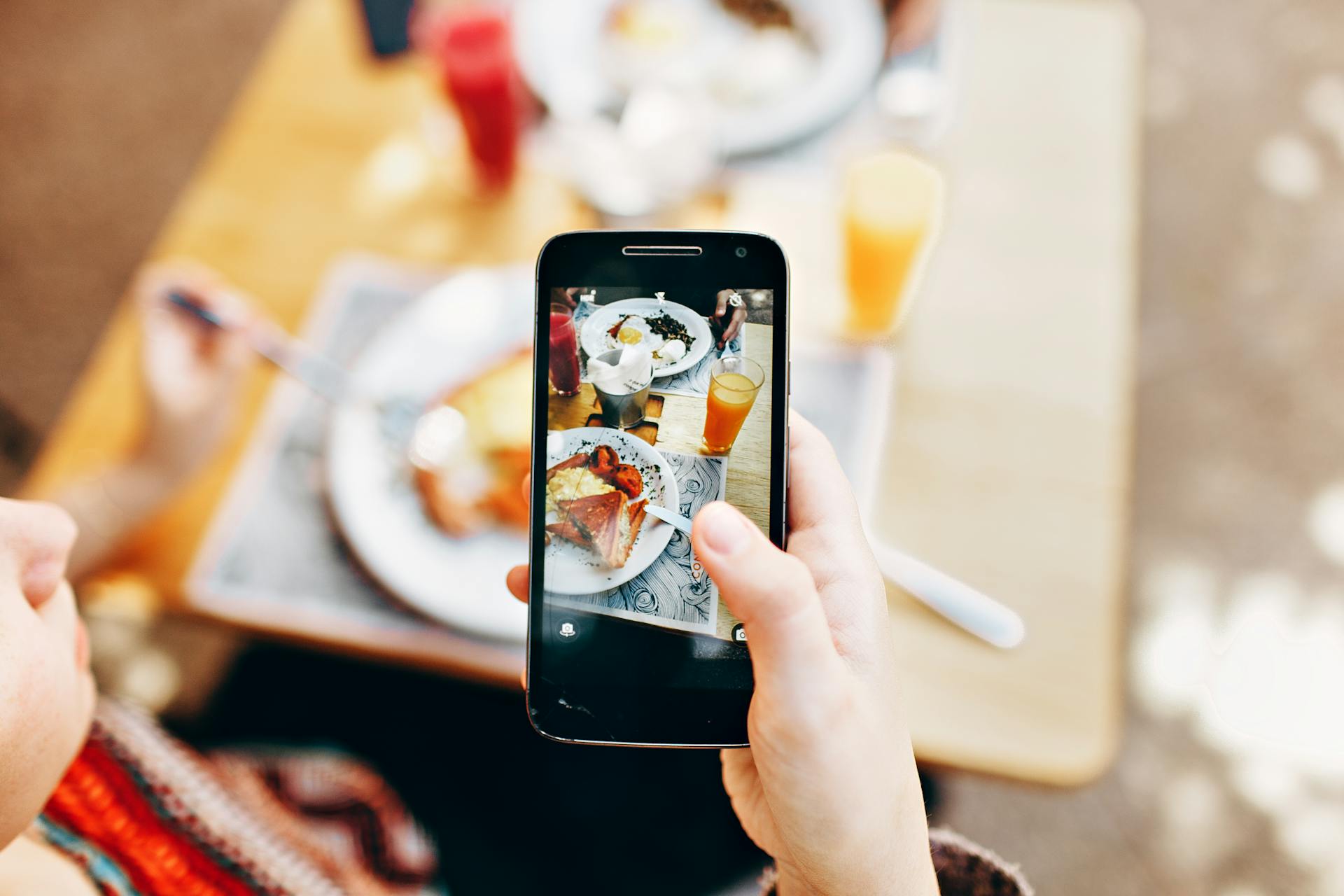
Struggling to fit breakfast into your calorie-counting diet? You're in luck! Two scrambled eggs offer an incredibly low-calorie option that still satisfies. In fact, two large eggs have only about 150 calories, making them one of the lowest calorie heavy breakfast staples around.
Where the calories come from largely depends on how you prepare them. If you scramble your two eggs with just a splash of skim milk and cook in a nonstick skillet with no added oil or butter, you can rest assured you won't be adding additional unnecessary fat or calories to the mix. The nutrition facts for these Prepared Plain Scrambled Eggs from the USDA reports 1/4 cup (45 grams) contains 65 calories, 4 grams of protein and 4 grams of fat so two large eggs will clock in around double these numbers (unless you choose jumbo sized).
It's important to note that when enjoying those delicious scrambled eggs don't forget about the sides! Adding cheese and traditional accompaniments like bacon can significantly increase calorie counts—not to mention fat content. Instead consider including side items like fresh fruit in place of processed sausage or piling on some chopped veggies like pepper strips and onions for bulk without seriously compromising taste or nutrition profile.
In conclusion – sticking with an egg-based dish like two medium poached eggs is an excellent way to lighten up an otherwise hefty meal while guaranteeing satisfaction no matter if it is as quick breakfast before work or morning brunch at home.; They not only satisfy one's hunger but also go easy on their waistline by offering up negligible caloric amounts from any added ingredients limiting additional unwanted fats and sugars.
For more insights, see: 2 Eggs Scrambled
How many calories in one hard-boiled egg?
If you’ve ever been curious about how many calories one hard-boiled egg contains, the answer is quite simple. A single large hard-boiled egg contains approximately 78 calories.
To compare, a single large raw egg will contain a slightly smaller number of calories at 72. So, if you were to choose between eating one of these two options for breakfast or as a snack, then the cooked version provides slightly more nutrition in terms of calorie count. Of course tastes may dictate preference but it’s useful to know that cooking your eggs does not add any additional caloric value!
What makes hard boiled eggs even more appealing is their nutritional profile of proteins and essential vitamins and minerals that are both sustaining and help to control cravings and regulate hunger throughout the day without unnecessary added sugars or other unhealthy ingredients. Specifically, an average sized egg has 6 grams of protein with necessary vitamin D levels and the B vitamins which function as coenzymes in your metabolism to turn carbohydrates into energy; they also offer contain beneficial antioxidants like lutein and zeaxanthin which help promote eye health as well as other anti-inflammatory compounds such as omega 3 fatty acids so you can rest assured that this healthy snack has numerous benefits beyond controlling cravings throughout the day!
Curious to learn more? Check out: How Much Just Egg Is Equal to One Egg?
How many calories in a bowl of oatmeal?
If you've ever wondered how many calories are in a bowl of oatmeal, then you're not alone. Oats are a popular breakfast food and their nutty flavor make them attractive to many people.
According to the United States Department of Agriculture (USDA), one cup of cooked oats contains about 166 calories. However, your typical bowl of oatmeal could contain anywhere from 140-180 calories depending on the type and amount of ingredients added. If you add a tablespoon of butter or oil, this can further increase the total calorie count by another 100 - 200 calories. And if you add nuts, dried fruit or honey for sweetness this could also increase your calorie intake significantly as well.
For example; one cup of cooked oats with 2 tablespoons honey could contain around 220-240 calories while adding 1/2 sliced banana plus one tablespoon peanut butter into the mix would bring your total calorie count up to 280 - 300 depending on how much banana and peanut butter is used in each serving portion.
It’s important to remember that these numbers are for individual servings only, so if you have more than an “average” portion then you should increase those calculations accordingly when trying to determine how much energy is in each bowlful of oatmeal that is eaten otherwise this could easily lead an unsuspecting dieter astray!
A fresh viewpoint: How Much Just Egg for One Egg?
How many calories in one slice of toast?
One slice of toast typically ranges in calorie count depending on the type of bread used and other toppings. White bread, which is commonly used for toast and is often considered processed, typically contains around 78 calories per slice. On the other hand, whole wheat or whole grain options generally contain more calories with around 94 calories per slice.
When you add butter, peanut butter or cream cheese to your toast you’ll be adding an additional 40-50 calories for each tablespoon you use. So if your toast includes butter along with white bread you’re looking at a total of 118 - 128 Calories from one slice of toast.
For health-conscious individuals looking to watch their calorie intake in order to shed a few pounds or maintain weight, this might seem like an insignificant amount; however we must keep in mind that these amounts are based on one single serving size which often won’t feel very substantial when it comes time to satisfy our hunger pangs!
Intriguing read: Can Just Egg Be Used for Baking?
How many calories in one piece of bacon?
If you’re looking for a delicious, quick breakfast option, bacon is a great choice. But how many calories does one piece of bacon contain? The answer may surprise you!
There are about 44 calories in one piece of cooked bacon. One piece of bacon contains 9 grams of fat and 1 gram of protein. This combination makes it a great food to include in an overall healthy diet as part of your daily calorie intake.
The amount of fat and calories in one piece can vary depending on the type or brand of pork product used to make the bacon - some may contain more fat or sodium than others. Additionally, the way that it is cooked can also affect the amount of calories - cooking it with less oil will result in fewer calories consumed. It’s important to keep track no matter what type or how you cook your bacon so that you know exactly how much you’re consuming each time!
In spite of its higher fat content compared to other proteins sources such as chicken and fish, eating bacon moderately can be beneficial for helping more traditional weight loss diets when paired with other activities such as physical activity that burn off those extra fats from foods like this – but only when consumed sensibly and within reason (it should be considered an occasional ‘treat’).
All in all, if eaten in moderation (like most things!) not only can it add flavor to your meals but also potentially provide health benefits as well! So don't let calorie concerns stop you from enjoying a slice now and then—just remember: moderation is key!
See what others are reading: Bacon Egg
How many calories in two slices of ham?
If you're looking for a quick, convenient lunch or dinner option, two slices of ham may be just the ticket! But how many calories are in two slices? Here is a breakdown of what you can expect to find.
On average, two thin slices (28 grams) of ham contain approximately 60 calories. The calorie count largely depends on what type of ham that is being used. A regular slice of deli-style honey smoked ham contains about 25 calories per slice whereas if you choose premium deli-style oven roasted ham it will contain roughly 33 calories per slice. Additionally, if you opt for thin sliced pre-packaged honey baked ham your count can range from 20 - 24 calories per thin slice depending on the brand and size.
In all cases, remember that to get an accurate calorie count, always refer to the manufacturer's nutritional labeling or website for the exact figures as each product can have slight variations in their ingredients and caloric content. With that said however, those are generalizations given as guidance when selecting between variants and trying to pick the healthiest option available.
Expand your knowledge: 2 Slices
How many calories in two tablespoons of butter?
If you're counting your calories, butter can be an important part of your diet - providing flavorful energy with minimal effort. But have you ever wondered just how many calories are in two tablespoons of butter?
The answer is actually fairly simple - Two tablespoons of butter have a total of 204 calories. While that may seem like a lot, keep in mind that it's spread out over the 16 grams of fat and 8 grams of saturated fat that comprise each tablespoonful, meaning the overall effect on your caloric intake is rather small.
Butter also contains 7% of your daily Vitamin A requirement; this vitamin helps promote healthy vision, skin health and more - as little as two tablespoons can help get you closer to getting what your body needs!
That being said, despite its multi-beneficial qualities our bodies still require us to practice moderation when incorporating butter into our diets; excess amounts can lead to increased cholesterol levels which present their own set of unwanted side effects. Ultimately it's up to you to decide how much Butter (or other high-calorie ingredients) is right for your body type and metabolism level — so don't be afraid to ask yourself "How many calories am I consuming?" as well as "how many should I?" before indulging in every delicious morsel!
Featured Images: pexels.com


